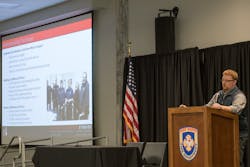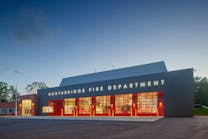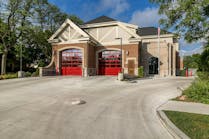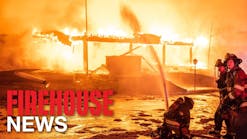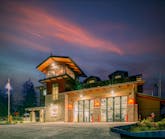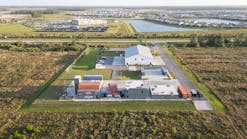Isolated Living Spaces Meet the Needs for Gender-Neutral Fire Stations
FORT WORTH, TX—Understanding the intricacies of gender identity and the Fair Labor and Standards Act (FLSA) during the planning process for new or existing fire stations can help create privacy in fire stations and reduce the likelihood of costly lawsuits.
Robert Manns, a principal with Manns Woodward Studios, told 2017 Station Design Conference attendees that they need to pay close attention to existing and future laws during his session titled "Gender-Neutral Fire Stations." Manns has been involved with over 40 fire station projects and said he saw the need to address the issues over the last few years.
“The issue that we’re facing as architects is that we want to help our clients stay well-informed,” said Manns. “We’re trying to forecast things like this to get ahead and prevent costly issues.”
Manns opened the presentation with a case study of an incident that turned into a costly lawsuit after a female was assigned to a new fire station.
The lawsuit claimed that a male fire officer told the female, “We aren’t changing 150 years of tradition just because there’s a ***** is in the house now."
The court awarded the female firefighter $25,000, additional time off to recover from the incident and required all fire officers to attend sexual discrimination and harassment classes.
Manns said the easiest and least expensive way for fire departments to avoid many of the gender and privacy issues is by creating individual sleeping and bathroom spaces.
The individual—or isolated—spaces can eliminate the need for male and female bunks and restrooms and it's an idea that his firm has been pushing for the last 10 years.
"There were some discrimination lawsuits in the news and I started thinking that so much of the design could be for firefighters, not for males or females or transgender," said Manns. "You create a culture that supports diversity with the design of each living space."
Manns said 10 states have passed their own version of the transgender bathroom law, which will require a third bathroom—if stations have assigned male and female spaces.
"It’s on track, legally, whether we like it or not, and it will become law in more places and will impact us similar to when the American Disabilities Act was made law," he said.
"By setting up the isolated spaces, you might spend a little more money on the front end, but it will save money down the road," said Manns. He added that the isolated spaces can actually save on space in station layouts in the long run.
Manns said the consensus he's received from female firefighters on various projects is that they prefer to have a urinal in the restrooms for added cleanliness and hygiene.
The Affordable Healthcare Act and FLSA law also requires private spaces for new mothers to tend to their family's needs.
"Having the isolated sleeping space allows for that extra privacy without adding any costs to the project. I can’t think of a station in the last 10 years where we had a shared bathroom or locker room," Manns said.
His firm is currently going through a large project to upgrade several fire stations to meet these needs and space limitations will make them use the individual spaces.
One project he was involved with had several two-person bunk rooms for regular crews and they added a large bunk room with high walls that allow added privacy when major storms or incidents require added members to sleep at the station.
"Be creative with how you solve the issues," Manns recommended to attendees. "Look at your laws, see what they mandate, and design a facility that mitigates the risk of facing discrimination lawsuits ahead of time. You can build plenty of bathrooms for that $2.5 million you'll pay out in a lawsuit.
